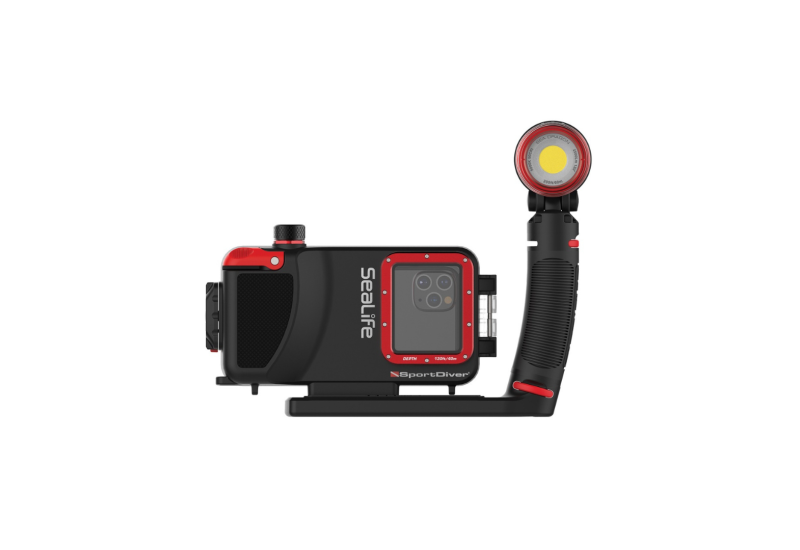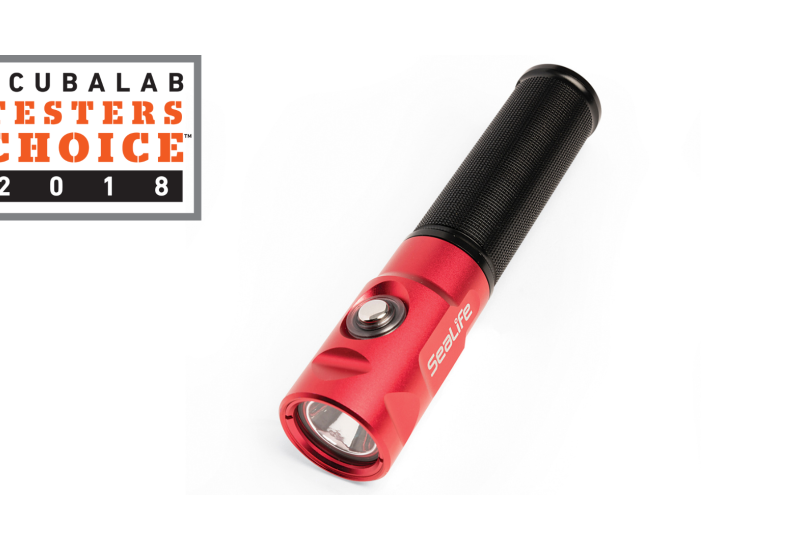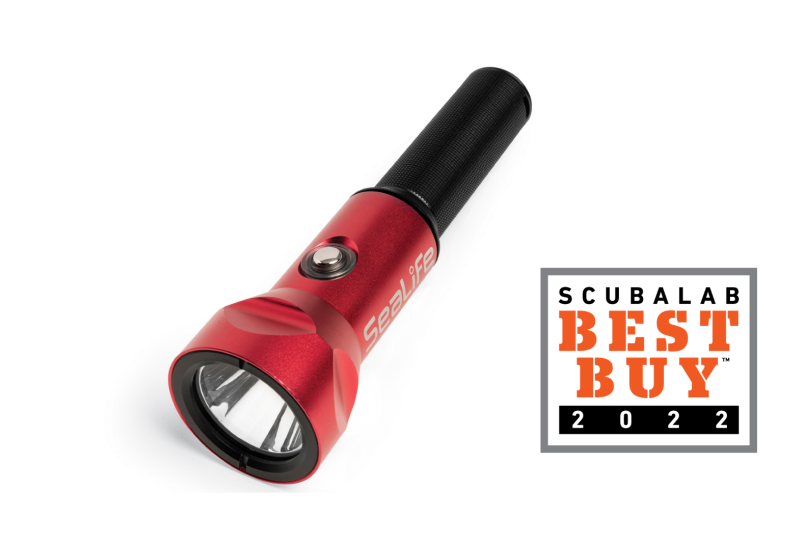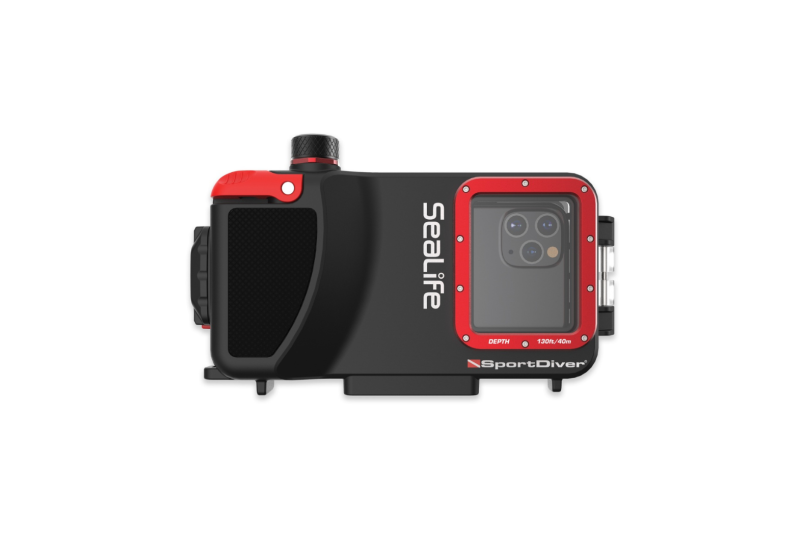Dive Training: Do Surface Signaling Devices Work?

As you finish your safety stop and start making your way topside, you notice the bottom below is slowly drifting by. At the surface, you don't see the boat because of the chop, but as you inflate your BC it comes into view. You're surprised at how far away it appears. You roll onto your back and start kicking. After a few minutes you turn over to check your progress and a shiver of panic goes through you. You realize you are actually farther away than when you started. You quickly think of your options and the safety gear you are carrying-a signaling tube and an air horn. What should you do first? Which one will get the boat's attention? Will any of them work?
We decided to find out.
We contacted all major manufacturers and asked them to send us their best "come get me" gear. We focused our review on two categories: visual signaling devices and audible signaling devices. We then set out to discover just how well they really work in the cold and unforgiving vastness of the Pacific Ocean. Using a custom Radon 26-foot dive boat, we spent two days off the coast of Santa Barbara, Calif., measuring the visible range of signaling tubes and the audible range of horns and whistles. The results were sobering, and at the end of the test, everyone on our team left with a better understanding of the limits of signaling devices — and a vow to brush up on underwater navigation skills to avoid surfacing too far from the boat.
How We Tested Them
Signal Tubes. Each signal tube was first tested to find the exact depth to which it must be submerged in order for it to remain in a vertical position. Each was then weighted to simulate a diver pulling down on the tube to create this stable position. We clipped each tube to an anchored buoy and entered the buoy's position into the onboard GPS chart plotter. We then motored east from the tube, stopping at distances of one-quarter, one-half, three-quarters and one full nautical mile. At each distance, the crew would scan the horizon to see if the tube was still visible to the naked eye. With this data in hand, we then geared up and hit the water to examine how a diver would pack, deploy, inflate and stabilize each device.
Signal tubes were tested over the course of two days.
Day 1
Conditions: Sunny, clear skies, sun at our back. Surface Visibility: 5 to 8 miles. Wind: Calm, no whitecaps. Swell: 1 foot. Searcher's eyes: 6 feet above the waterline.
On the first day, we attached each signal tube to a line at five-foot intervals for side-by-side comparison. We placed the tubes in order from tallest to shortest, and predictably discovered that the smaller tubes vanished first.
Day 2
Conditions: Overcast, sun at our back. Surface Visibility: 3 to 5 miles. Wind: Calm, no white-caps. Swell: 1 to 2 feet. Searcher's eyes: 6 feet above waterline.
On the second day, we deployed each signal tube by itself, simulating a single diver adrift. Right away, we noticed that visible distances were shorter than the previous day when there was direct sunlight and multiple targets. The more conservative measurements taken on this day are included in each review. Note, however, that with the sun at our back, no whitecaps and small seas, conditions were as close to optimal as you can get. In a real "come and get me" situation, the range of visibility could be better or worse depending on conditions.
Audible alerts. One tester was left anchored in a zodiac with a handheld VHF radio and our inventory of whistles and horns. At various measured distances, we stopped, signaled the tester to begin sounding each device, and listened with the engine at idle to provide normal boat noise. The boat was positioned downwind to offer optimal conditions. The maximum audible range of each device is included in the reviews for comparison, but it should be noted that in other conditions the range may vary.
Conclusions
While signaling tubes and audible signaling devices do dramatically improve your odds of being spotted, we were surprised at the limited range they offered, even in our relatively good conditions. In general:
Size matters. All signal tubes tested were visible at one-quarter nautical mile, and about half were still visible at the half-mile mark. As expected, the longer the tube, the greater the visible range. The largest tubes in this test were visible at the three-quarter mark, and only one was still visible at almost one nautical mile.
Color matters. We also found that fluorescent yellow was very easy to spot in overcast conditions while orange stood out in bright sunlight. Lettering on tubes was not particularly helpful, and the black webbing tape that trimmed the edges of most tubes only lessens the potential visibility at greater distances.
Audible ranges are limited. Whistles were effective only to about one-quarter mile, with a few discernible at a half mile, but all were still better than yelling, which could be heard only at a tenth of a mile. Of the two air horns tested one was stellar, blasting out its call up to one mile away.
Our findings suggest that you have a fairly small window of opportunity to be seen if you're being swept away from the boat in a strong current. If you surface in a two-knot current, for example, you will drift a quarter mile in only 7.5 minutes. Think of the boat with rings around it every quarter mile. Within the first ring you have a good chance of getting noticed with most signaling devices tested here, but once you pass the half-mile mark, the ability to be seen or heard drops off significantly. If you surface already a quarter-mile downcurrent from the boat, you only have a few minutes to deploy your signal tube, sound the alert and get noticed before you pass that second ring.
Your odds are better with a very tall signal tube (eight to 10 feet), which, based on our test, could make you visible up to nearly a mile away. The higher the boat deck or point from which the searcher is looking will also improve your odds of being spotted. If the searcher is using binoculars (7 x 50 is standard for marine use), your chances of being spotted double. But once you are out of visual and audible range, it's a big ocean — an electronic beacon or EPIRB may be the only way to get found.
How to Get Noticed
Always dive with at least two signaling devices — a signaling tube and an air horn or whistle. For maximum visibility in all situations, it also helps to have a signaling mirror, too.
Buy the longest, widest, brightest tube you can carry.
Deploy your signal tube immediately upon surfacing if you're drifting away from the boat. You may be out of visible range in a matter of minutes.
Wave the tube over your head and blow your whistle until you see some sign that the boat has noticed you. Multiple tubes are easier to spot than individual ones. If your buddy has a tube, both should be deployed. Different colors are easier to spot depending on the conditions, have a yellow and an orange tube and deploy both for maximum visibility.
When you have the boat's attention, attach the tube so that it remains vertical in the water, and start flashing your mirror toward the boat.
If it appears the boat is unaware of your situation and you are close to shore or an island, swim in that direction. You may be able to swim perpendicular to the current and escape its pull.
Our Tips for Putting Together the Best Surface Signaling Kit
If we were putting together the perfect signaling kit, we'd start with a six-foot tube that stands almost five feet above the waterline that you clip to a lower D-ring for nearly hands-free operation; add a whistle that can be heard at a distance of one-half mile and a flashing strobe with a battery that will last 8 hours, and then throw in a signal mirror and 12-hour light stick just in case. Choose a tube that's also easy to use — one that can be filled from a regulator, orally, or from your inflator hose. A built-in mesh pocket is also handy as it corrals all the accessories, and find one that has a full-length, wide reflective strip, which provides better vis at night.
Dive Alert

It's the original integrated inflator air horn, and still the loudest we have tested. The company claims that it can be heard up to a mile away, and our results proved them right. The quality of sound is similar to the high pitch of a smoke detector alarm but 100 times louder. At this distance we couldn't see our "diver," but knew he was out there. Dive Alert is offered in three different models to fit a variety of inflators.
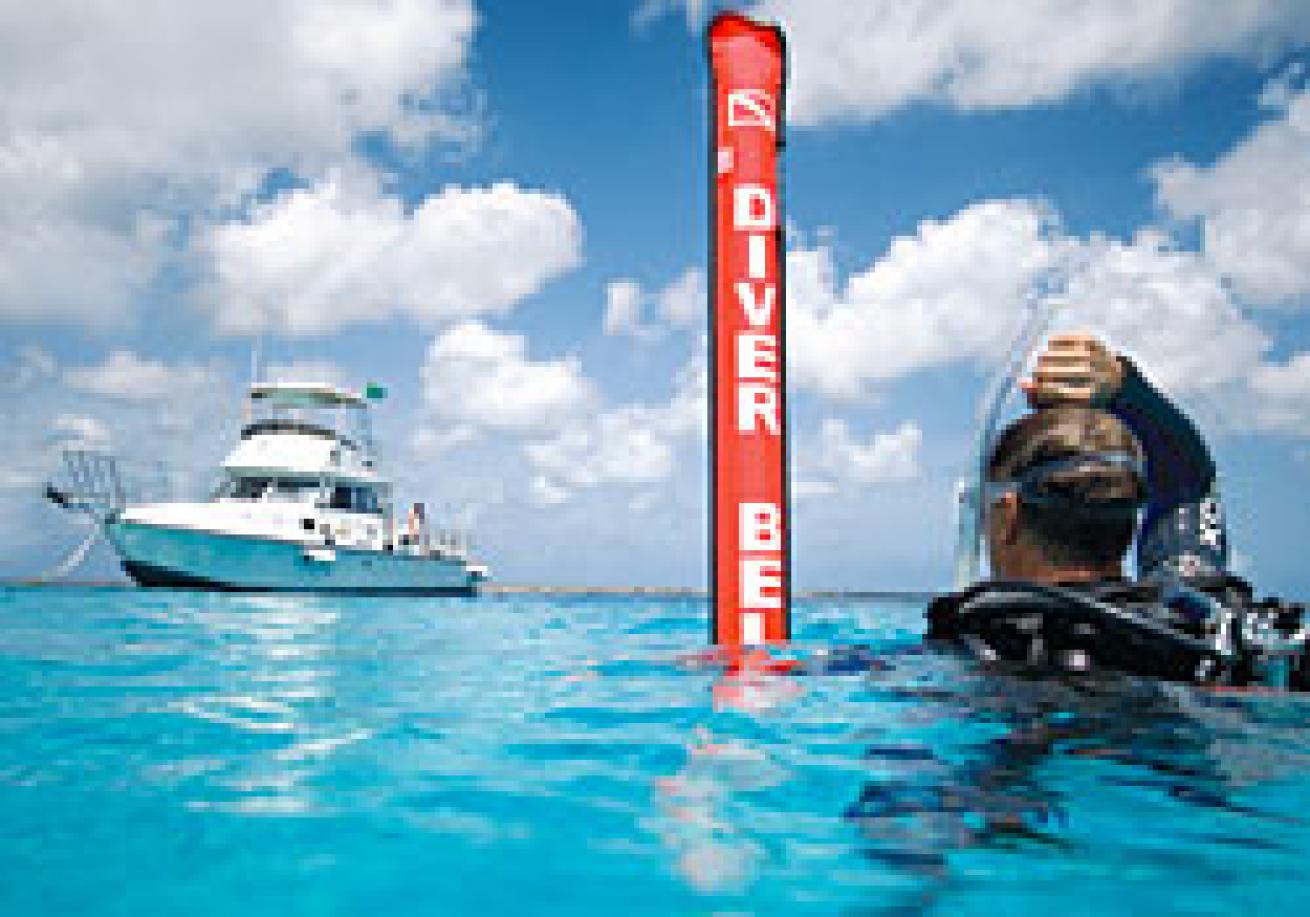
As you finish your safety stop and start making your way topside, you notice the bottom below is slowly drifting by. At the surface, you don't see the boat because of the chop, but as you inflate your BC it comes into view. You're surprised at how far away it appears. You roll onto your back and start kicking. After a few minutes you turn over to check your progress and a shiver of panic goes through you. You realize you are actually farther away than when you started. You quickly think of your options and the safety gear you are carrying-a signaling tube and an air horn. What should you do first? Which one will get the boat's attention? Will any of them work?
We decided to find out.
We contacted all major manufacturers and asked them to send us their best "come get me" gear. We focused our review on two categories: visual signaling devices and audible signaling devices. We then set out to discover just how well they really work in the cold and unforgiving vastness of the Pacific Ocean. Using a custom Radon 26-foot dive boat, we spent two days off the coast of Santa Barbara, Calif., measuring the visible range of signaling tubes and the audible range of horns and whistles. The results were sobering, and at the end of the test, everyone on our team left with a better understanding of the limits of signaling devices — and a vow to brush up on underwater navigation skills to avoid surfacing too far from the boat.
How We Tested Them
Signal Tubes. Each signal tube was first tested to find the exact depth to which it must be submerged in order for it to remain in a vertical position. Each was then weighted to simulate a diver pulling down on the tube to create this stable position. We clipped each tube to an anchored buoy and entered the buoy's position into the onboard GPS chart plotter. We then motored east from the tube, stopping at distances of one-quarter, one-half, three-quarters and one full nautical mile. At each distance, the crew would scan the horizon to see if the tube was still visible to the naked eye. With this data in hand, we then geared up and hit the water to examine how a diver would pack, deploy, inflate and stabilize each device.
Signal tubes were tested over the course of two days.
Day 1
Conditions: Sunny, clear skies, sun at our back. Surface Visibility: 5 to 8 miles. Wind: Calm, no whitecaps. Swell: 1 foot. Searcher's eyes: 6 feet above the waterline.
On the first day, we attached each signal tube to a line at five-foot intervals for side-by-side comparison. We placed the tubes in order from tallest to shortest, and predictably discovered that the smaller tubes vanished first.
Day 2
Conditions: Overcast, sun at our back. Surface Visibility: 3 to 5 miles. Wind: Calm, no white-caps. Swell: 1 to 2 feet. Searcher's eyes: 6 feet above waterline.
On the second day, we deployed each signal tube by itself, simulating a single diver adrift. Right away, we noticed that visible distances were shorter than the previous day when there was direct sunlight and multiple targets. The more conservative measurements taken on this day are included in each review. Note, however, that with the sun at our back, no whitecaps and small seas, conditions were as close to optimal as you can get. In a real "come and get me" situation, the range of visibility could be better or worse depending on conditions.
Audible alerts. One tester was left anchored in a zodiac with a handheld VHF radio and our inventory of whistles and horns. At various measured distances, we stopped, signaled the tester to begin sounding each device, and listened with the engine at idle to provide normal boat noise. The boat was positioned downwind to offer optimal conditions. The maximum audible range of each device is included in the reviews for comparison, but it should be noted that in other conditions the range may vary.
Conclusions
While signaling tubes and audible signaling devices do dramatically improve your odds of being spotted, we were surprised at the limited range they offered, even in our relatively good conditions. In general:
Size matters. All signal tubes tested were visible at one-quarter nautical mile, and about half were still visible at the half-mile mark. As expected, the longer the tube, the greater the visible range. The largest tubes in this test were visible at the three-quarter mark, and only one was still visible at almost one nautical mile.
Color matters. We also found that fluorescent yellow was very easy to spot in overcast conditions while orange stood out in bright sunlight. Lettering on tubes was not particularly helpful, and the black webbing tape that trimmed the edges of most tubes only lessens the potential visibility at greater distances.
Audible ranges are limited. Whistles were effective only to about one-quarter mile, with a few discernible at a half mile, but all were still better than yelling, which could be heard only at a tenth of a mile. Of the two air horns tested one was stellar, blasting out its call up to one mile away.
Our findings suggest that you have a fairly small window of opportunity to be seen if you're being swept away from the boat in a strong current. If you surface in a two-knot current, for example, you will drift a quarter mile in only 7.5 minutes. Think of the boat with rings around it every quarter mile. Within the first ring you have a good chance of getting noticed with most signaling devices tested here, but once you pass the half-mile mark, the ability to be seen or heard drops off significantly. If you surface already a quarter-mile downcurrent from the boat, you only have a few minutes to deploy your signal tube, sound the alert and get noticed before you pass that second ring.
Your odds are better with a very tall signal tube (eight to 10 feet), which, based on our test, could make you visible up to nearly a mile away. The higher the boat deck or point from which the searcher is looking will also improve your odds of being spotted. If the searcher is using binoculars (7 x 50 is standard for marine use), your chances of being spotted double. But once you are out of visual and audible range, it's a big ocean — an electronic beacon or EPIRB may be the only way to get found.
How to Get Noticed
Always dive with at least two signaling devices — a signaling tube and an air horn or whistle. For maximum visibility in all situations, it also helps to have a signaling mirror, too.
Buy the longest, widest, brightest tube you can carry.
Deploy your signal tube immediately upon surfacing if you're drifting away from the boat. You may be out of visible range in a matter of minutes.
Wave the tube over your head and blow your whistle until you see some sign that the boat has noticed you. Multiple tubes are easier to spot than individual ones. If your buddy has a tube, both should be deployed. Different colors are easier to spot depending on the conditions, have a yellow and an orange tube and deploy both for maximum visibility.
When you have the boat's attention, attach the tube so that it remains vertical in the water, and start flashing your mirror toward the boat.
If it appears the boat is unaware of your situation and you are close to shore or an island, swim in that direction. You may be able to swim perpendicular to the current and escape its pull.
Our Tips for Putting Together the Best Surface Signaling Kit
If we were putting together the perfect signaling kit, we'd start with a six-foot tube that stands almost five feet above the waterline that you clip to a lower D-ring for nearly hands-free operation; add a whistle that can be heard at a distance of one-half mile and a flashing strobe with a battery that will last 8 hours, and then throw in a signal mirror and 12-hour light stick just in case. Choose a tube that's also easy to use — one that can be filled from a regulator, orally, or from your inflator hose. A built-in mesh pocket is also handy as it corrals all the accessories, and find one that has a full-length, wide reflective strip, which provides better vis at night.
Dive Alert
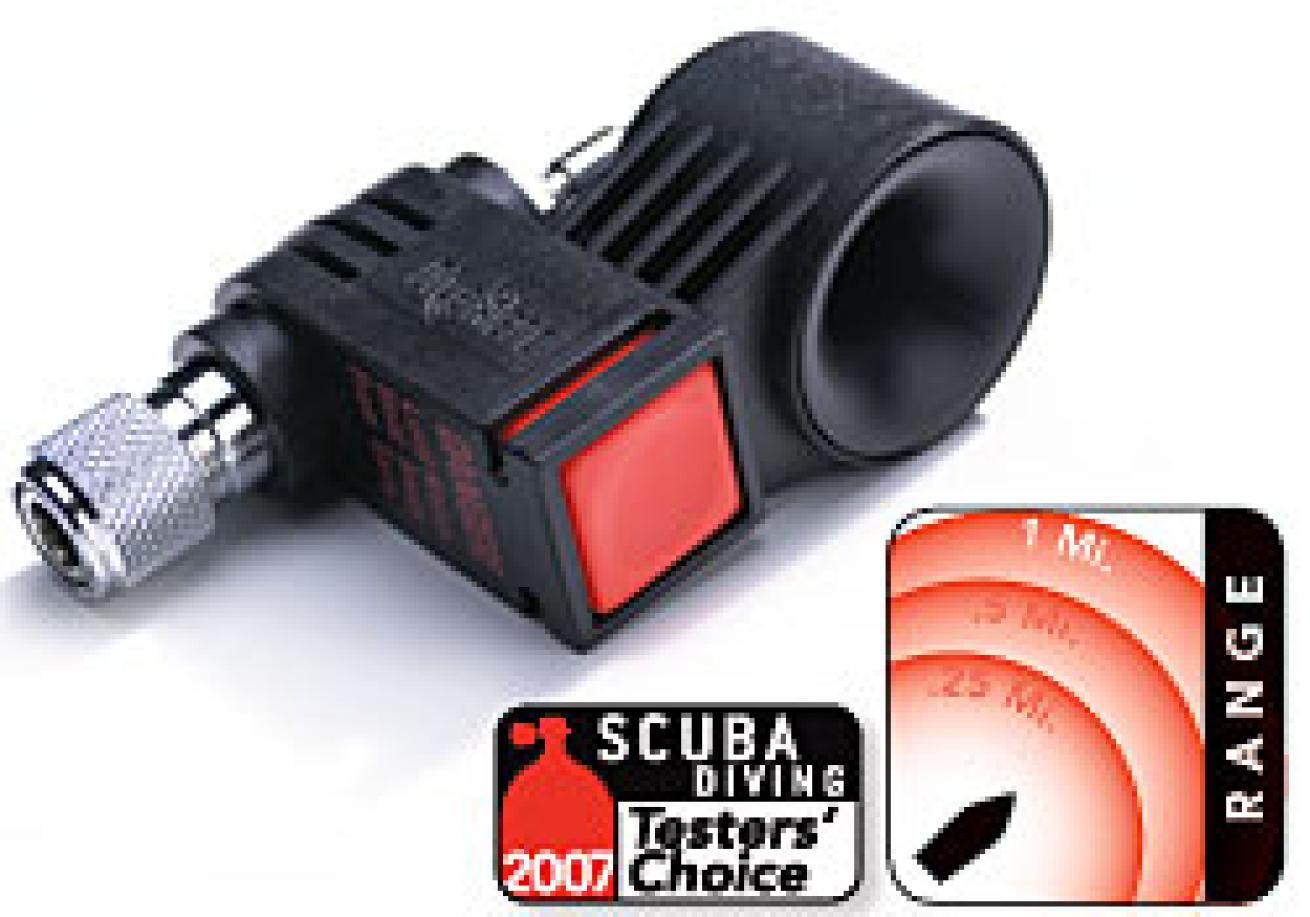
It's the original integrated inflator air horn, and still the loudest we have tested. The company claims that it can be heard up to a mile away, and our results proved them right. The quality of sound is similar to the high pitch of a smoke detector alarm but 100 times louder. At this distance we couldn't see our "diver," but knew he was out there. Dive Alert is offered in three different models to fit a variety of inflators.

